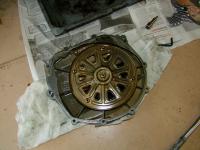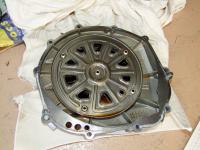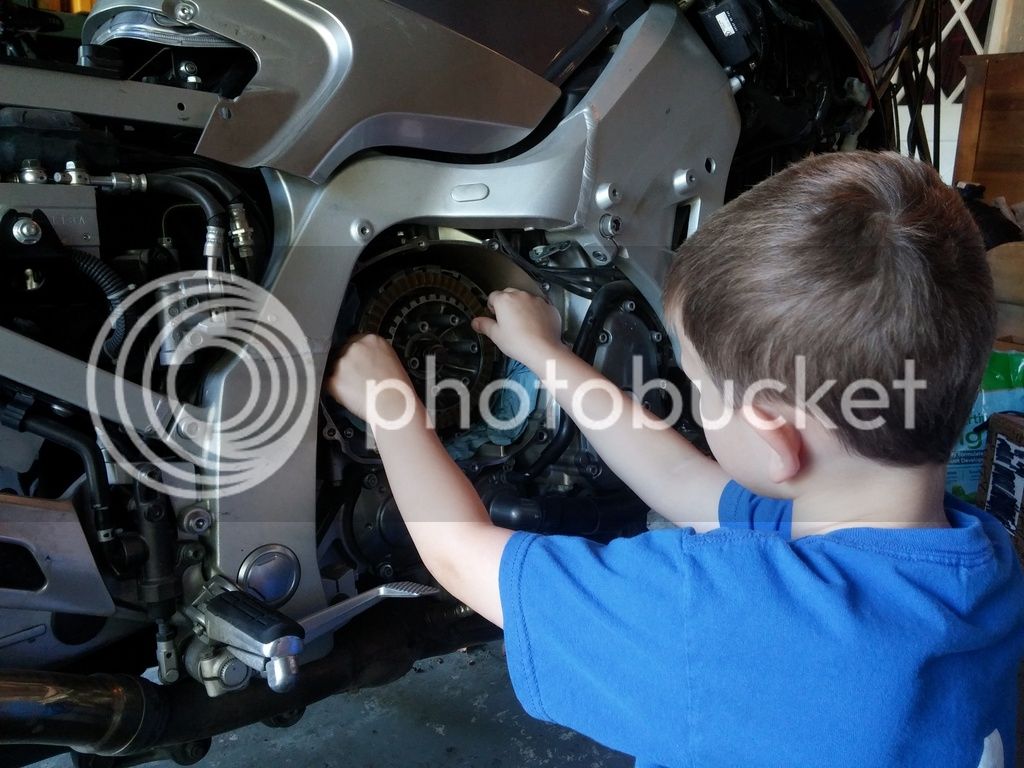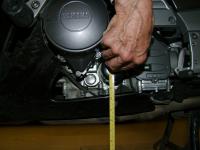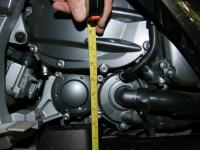Yep, there was a gasket, stuck by its edge to the clutch cover by factory engine paint. VERY well disguised. It did come off and was in good condition. I installed it back on the case over the locator pins, then installed the cover.
After cleaning, the friction plates got a good 3 hours of soaking inside of a gallon Ziploc bag in a nice bath of fresh YammyLube 20/50. Every 30 minutes or so, I'd move the plates around, squishing the oil about inside the bag. A zip tie loosely wrapped at the pink dots kept all the plates in proper order of removal. I let the plates be good and wet as I reinstalled them, figuring the spring tension of the system would squeeze out excess. I put a black Sharpie mark at the 12:00 of every bolt and part I removed to assure identical re-installation.
I put a digital caliper on the friction and steel plates, all were fine, plenty of wear left. Pretty good for having this sticky clutch for 26000 miles. Although no local dealer had parts in stock, cover gaskets go for about $19, and a new stack of friction plates would be around $120-130. Good to know for the future. It started up without issue- no funny noises, no error codes.
The outer plates were wet at disassembly, as others have found, but the inner plates were essentially dry. Nothing was stuck together, but the inner plates did have some of that gooey schmutz between the fiber pads on the friction plates so I took some time to wipe all that out with clean rags.
All the pink dots were in alignment when I opened the clutch, and installed in the "2 triangle" position. That fine wire retention gizmo at the back inside of the plate set was okay to get out, and quite, uh, fun to get back in place. Thank goodness for old dental picks.
One more venture into the unknown. Hopefully I won't have to do that again anytime too soon.
Mr. BR, I left in neutral and yes, I did need to rotate the basket when working with that retention wire.
mcatrophy, that detailed photo how-to of yours was a great help to me to tackle this project, thanks a lot for doing that posting!
Time to take it for a test ride...
Thanks,
Steve.




